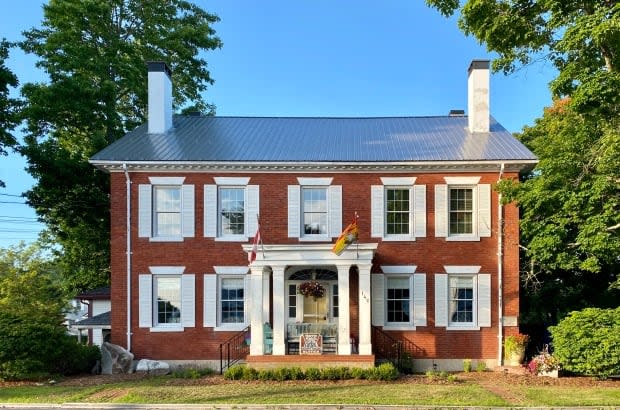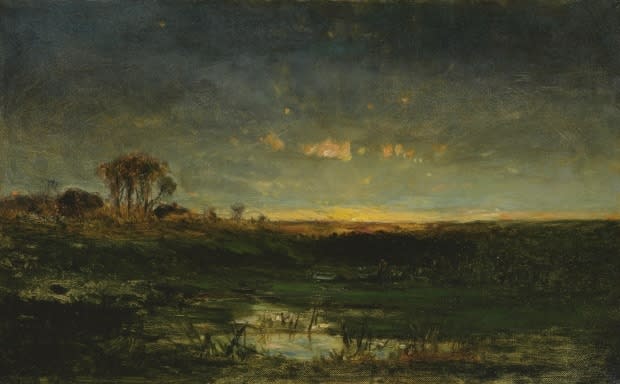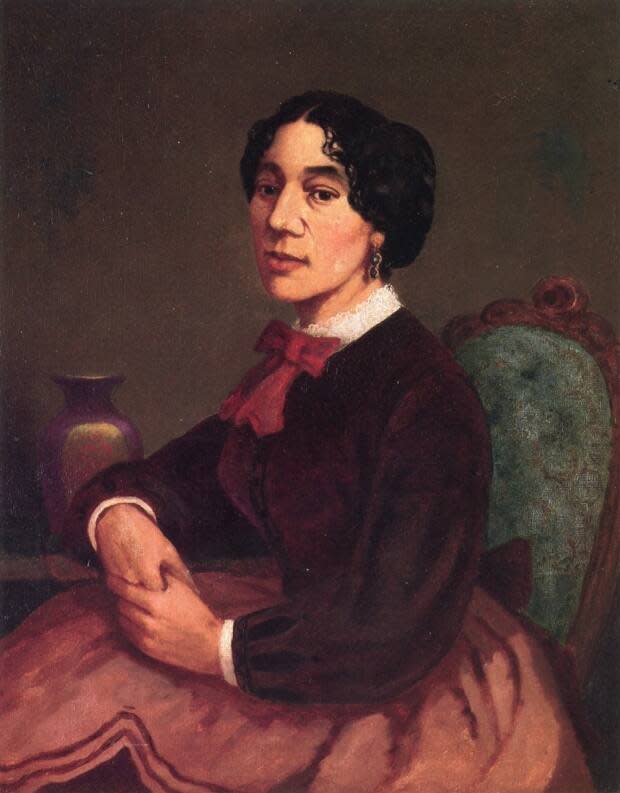Call him an 'activist artist': Giving New Brunswick-born painter E.M Bannister his due

His paintings adorn the walls of some of the most important buildings in the United States.
The Smithsonian American Art Museum has dozens of his landscapes, and his works are considered by experts to be some of the best examples of 19th century American art. They have sold at auction for tens of thousands of dollars.
He was also an outspoken advocate for the end of slavery and worked to better the lives of African-Americans through much of his life.
But Edward Mitchell Bannister is still little known in the country where he was born.
Some people would like to change that.
Born in Saint Andrews in 1828, it has been said he was the son of a white Canadian woman and a Black man from Barbados, but scholars are now beginning to doubt whether his mother was white.

It is believed he was born in the Black community on the outskirts of the town, and either his mother or grandmother worked as a cook and housekeeper in the home of Judge Harris Hatch.
He was orphaned as a young man, and Hatch apparently took on the role of raising him.
Peter Larocque, the curator of art at the New Brunswick Museum, said that relationship seems to have been an important part of Bannister's early artistic development.
And recently, the New Brunswick Museum received three examples of his early work that suggest the judge encouraged Bannister's artistic leanings.
They're large watercolours, which Larocque believes he painted in his early teens.
"They are actually copies of what I believe to be British engravings," Larocque said.

The watercolours had been in Britain and still belonged to the family of the man who first purchased them.
Larocque said he was a British naval officer who was a friend of Judge Hatch.
Larocque describes the watercolours as "very competent," despite the unforgiving nature of watercolour paint, signed "E.M.B," and show the signs of a young artist trying to learn by copying other works.
Whether commissioned by the officer, or just a purchase of something Bannister had been working on, it's not a stretch to think Hatch played a role in the deal.
Larocque said the support Bannister received from his community in the early days in Saint Andrews was vital to his success in later years.
Those watercolours join an oil painting titled Evening that is already part of the museum's collection and is regularly on display there.

He left New Brunswick in his late teens, and went to sea as a ship's cook. That eventually took him to Boston, where he began his career as an artist.
Diane Heller is a New Hampshire-based filmmaker who has been working to make a documentary about Bannister's life for nearly a decade.
She became fascinated by his story while attending Brown University in Providence, R.I., the city that would become Bannister's home.
Her goal is to tell the story of his life and legacy, beyond his skill as an artist.
"All the articles you read were just imagery," Heller said, lamenting the lack of detail around the other aspects of his life.

Bannister was also an activist, an abolitionist, a philanthropist and, on top of all that, a capable yachtsman, Heller said.
"He literally was always successful," she said.
That included his choice of a partner, who is the reason he ended up in Rhode Island.
Christiana Babcock was born in the state and was of African-American and First Nations descent, 10 years older than Bannister.
She was known to Boston society as Madame Carteaux, the owner of a chain of successful hairdressing shops.
The story goes that the couple met when a 24-year-old Bannister applied for a job as a barber in one of her shops. They were married five years later.

During part of their time in Boston, they lived in the home of Lewis Hayden, an escaped slave and abolitionist who often sheltered Blacks in his home as part of the Underground Railroad.
Christiana's shops became meeting places for abolitionists, and the pair would also become involved in the fight to get equal pay and treatment for Black soldiers in the Union Army.
"His world included all the abolitionists in Boston," Heller said.
He was even very close to Frederick Douglass, abolitionist writer, orator and former slave, who would become the first Black person nominated to run as a vice-presidential candidate.
But breaking into the established art community in Boston was difficult for anyone, let alone a Black man.
So not long after the end of the Civil War, they moved to Providence.
There Bannister co-founded the Providence Art Club, which Heller said had the goal "to promote real New England artists."
He also sat on the founding board of the Rhode Island School of Design.

Christiana continued her work by creating the Home for Aged Colored Women, a nursing home to support Black domestic servants who found themselves jobless in old age.
All those organizations still exist, with the latter now called Bannister House.
And Edward Bannister painted prolifically. It's estimated there are at least 500 of his works in existence.
His talent was appreciated in his day, and he was the first Black artist to receive a national art prize.
He died in 1901, and Peter Larocque said Bannister's style of landscape painting fell into disfavour after the First World War and disappeared from art galleries and museums for decades.
In recent years, however, there has been a resurgence of interest in his works.

The Smithsonian has a large collection of his paintings, and in 2017 lent two of them to hang in the official vice-president's residence at One Observatory Circle — Woman Walking Down Path, 1882, and Landscape near Newport, R.I., ca.1877-1878.
They were part of six selected by Karen Pence, a former art teacher and the wife of former vice-president Mike Pence.
A spokesperson for the Smithsonian American Art Museum, Laura Baptiste, said in an email that those paintings are typically returned to the museum once the term is over and the new administration makes new requests.
Larocque thinks Bannister's works would have special meaning to the new vice-president, Kamala Harris, who lived in Quebec and attended school there.
"You would think Kamala Harris would, given her background, and the Canadian connection, be interested in keeping them there."
The official residence is currently undergoing renovations, and there's no word yet on whether the new administration has made requests to the Smithsonian.

Five kilometres away from the vice-president's residence, on the walls of the White House, hangs Bannister's The Farm Landing, which was purchased for display in the building in 2006, during the term of George W. Bush.
But does all this mean the artist is beginning to get his due?
"Oh gosh, not yet," said Heller.
"People still want to call him a Black artist. Until people call him an activist artist, he won't [get his due]."
Some people are trying to change that.
Heller is working on a short film, using Bannister's many paintings of coastal scenes, along with postcards of the late 19th and early 20th centuries, to recreate a trip around New England's waters Bannister would have sailed in his day.
And, she has plans for a series of films looking at other aspects of his life.
Nova Scotia arts curator David Woods told CBC News last fall he is planning a retrospective on Bannister's career, which he hopes will happen in Sackville sometime in 2023.
The Saint John Theatre Company's We Were Here production, recognizing New Brunswick's Black history, includes a piece on Bannister.
And British art historian Anne Louise Avery has a book in the works on Bannister.
Heller believes New Brunswickers should take pride in what Bannister accomplished, and the role the province and the community of Saint Andrews played in his formative years.
"It's no accident that he flourished from there, it couldn't have happened anywhere else and you can quote me on that."
For more stories about the experiences of Black Canadians — from anti-Black racism to success stories within the Black community — check out Being Black in Canada, a CBC project Black Canadians can be proud of. You can read more stories here.


